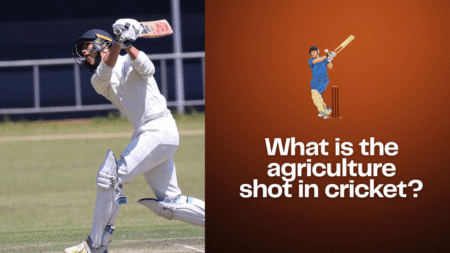

The cricket ground can be divided into two parts. These two parts are split based on the manner in which the batter is standing. In case of a right-handed batter, the part of the ground towards the batter’s bat is called the off-side. The part of the ground towards the batter’s legs is the on-side or the leg-side. The entire scenario would be vice versa for the left-handed batter.
The cricket ground also has a circle that is 30 yards away from the pitch. This 30-yard circle is a key factor in positioning the fielders. The names of the fielding positions are based primarily on the distance from the pitch where the fielder is standing, the fielder’s spot in relation to the 30-yard circle, and on which half of the ground is the fielder positioned.
Wicket-keeper
This fielder is responsible for collecting the ball bowled by the bowler and catching it in case a wicket is expected. The wicket-keeper ensures that any ball left or edged by the batter does not reach the boundary.
Slip cordon
Towards the wicket-keeper’s right lies the slip cordon. This cordon can consists of three slips and in some cases a fourth slip or a gully. These fielders are usually placed at the start of the match when the ball shines and swings in the initial overs. A pace bowler benefits from these fielders should a batsman nick a swinging ball. The fielder immediately on the right of the keeper is the first slip, who is placed a few steps behind the keeper. In line, but at a little arc away from the keeper and towards the right of the first slip lies the second slip. Accordingly, third and fourth slips are placed.
Point
This fielder lies on the off-side on the rim of the 30-yard circle nearly horizontal to the batsman.
Cover
This fielder lies on the off-side within the 30-yard circle to the right of point.
Mid-off
This fielder is placed within the 30-yard circle at a much straighter angle from the batsman on the off side.
Extra Cover
This fielder is placed between the cover and mid-off.
Mid-on
This fielder is placed within the 30-yard circle at a much straighter angle from the batter on the leg-side.
Mid-wicket
This fielder is placed within the 30-yard circle and corresponds to the fielder at cover on the leg-side.
Square-leg
This fielder is placed within the 30-yard circle and corresponds to the fielder at point on the leg-side.
Third-man
This fielder is placed on the off-side outside the 30-yard circle at a much more diagonal angle compared to the slips.
Fine-leg
This fielder corresponds to the fielder at third man but on the leg-side.
Long-on & Long-off
If the mid-on fielder is asked to move back towards the boundary, then they are now standing at long-on. Similarly, the mid-off fielder moved straight back to the boundary would then be standing at long-off.
The above-mentioned fielding positions are the most basic ones seen in cricket. But they are not the only ones. In order to remember other fielding positions, it is important to know a few prefix words. These words are added to the afore-mentioned basic terms and thus determine the fielding spot. Let us have a look at the examples:
Short
The word short indicates that the fielding spot is within the 30-yard circle. For example, short cover, short mid-wicket. However, this position is not too close to the pitch.
Silly
The word silly indicates that the fielder is standing very near to the pitch. For example, silly point, silly mid-on, silly mid-off, etc. These fielding positions are usually seen when a spinner comes to bowl.
Leg
When the word leg is added, it means that the fielder is positioned on the leg-side but behind the batter. For example, leg slip, leg gully, etc.
Deep
When the fielder is placed outside the 30-yard circle near the boundary, the word deep is added. For example, deep square-leg, deep mid-wicket, etc.
Clearly, there are more fielding positions than the total players in a team. Hence, the expertise of the captain and their co-ordination with the bowlers to setup a field plays a crucial role in the match.








